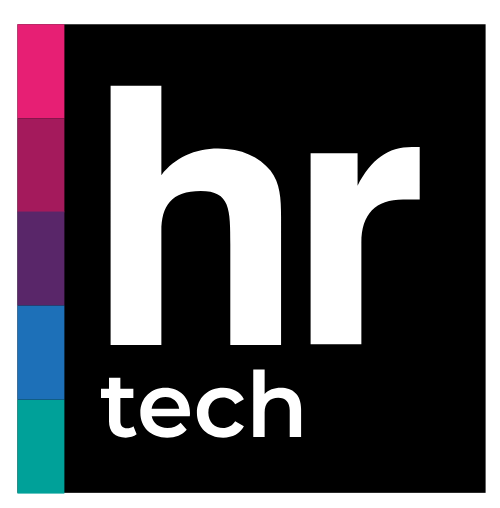News
"Immersion cooling is the key to future-proof data centers" - Franco Caroli for DC Power Talks
)
DC Power Talks continues to bring you the industry's most influential voices with this series of exclusive interviews with leaders who are defining the future of the industry. Throughout the year, we will explore key topics such as sustainability, infrastructure expansion, AI adoption and investment strategies.
On this occasion, we spoke with Franco Caroli, Sales Director for Southern Europe and Africa at Submer, to delve into the role of immersion cooling in the evolution of data centers. And we also discuss, among other topics, how this technology makes it possible to reduce energy consumption, increase operational efficiency and prepare for the growing demand for intensive computing.
1. Submer has emerged as a leader in immersion cooling solutions for data centers. Could you explain how this technology works and what advantages it offers over traditional cooling systems?
At Submer we specialize in Immersion Cooling Single Phase which is a technology of liquid cooling technologies. In our case, the fluid we use is dielectric, which means that it does not conduct electricity and transfers heat efficiently.
To explain how the technology works, let us first define the main components:
- The tank, which houses the servers immersed in the dielectric fluid.
- The Cooling Distribution Unit (CDU), responsible for transferring the heat of the fluid to a closed water circuit.
- The control box, which manages and monitors the refrigeration process in our product.
- Dry zones, spaces designed for the installation of accessories and to facilitate the operation and recurring maintenance of the immersion solution.
The principle of operation is based on 3 heat transfers:
- From the server to the dielectric fluid: server components, mainly CPUs and GPUs generate heat and 100% of this heat is captured by the fluid.
- From the dielectric fluid to the closed water circuit: this process takes place in the CDU, where we have a heat exchanger that transfers the heat captured by the fluid to a closed water circuit.
- From the water circuit to the outside: as in an air-cooled DPC, the heat transferred to the water circuit is dissipated to the environment through chillers.

If we consider the water circuit used, it is similar to what we have in an air-cooled DPC, the big difference is that with Immersion cooling you can operate with much higher temperatures.

From here, the main benefits of Immersion cooling are:
- Higher energy efficiency: By operating with higher water temperatures than conventional systems, chiller requirements are reduced and free cooling days are maximized, thus reducing energy consumption in case of mechanical cooling and water consumption in case of evaporators.
- Accommodate new generations of servers, which have more demanding cooling requirements and cannot be deployed with air cooling.
- Higher power densities: More kW per square meter can be accommodated than with traditional solutions.
Simplicity in the water circuit: Unlike other liquid solutions, Immersion Cooling collects all the heat generated by the servers in a single water circuit, reducing the complexity of the installation.
2. Sustainability is a growing concern in the data center industry. How do Submer's solutions contribute to reducing energy consumption and carbon footprint in these facilities.
As I mentioned before, when using Immersion cooling, the water circuit temperatures increase considerably, which allows to have a smaller cooling infrastructure with more days of free cooling. This translates into a lower PUE (ratio between total DPC consumption and ICT equipment consumption, the closer to 1 the better) resulting in lower energy consumption and reduced CO2 emissions.
On the other hand, Immersion cooling offers an infrastructure that allows for simpler and optimized heat recovery, so that part of the heat generated in the data center can be used in other applications such as district heating systems, greenhouses or pool heating.
It is also important to note that there is a trade-off between sustainability and power density; as power densities (kW/m2) increase, the lower the water temperatures required, which impacts the efficiency of the DPC. This principle applies to all cooling technologies. But, in general, under the same conditions, Immersion is more efficient than other cooling technologies on the market.
3. Submer has recently secured significant funding to fuel its growth. How does the company plan to use these funds to expand its market presence and develop new technologies?
This investment will enable us to strengthen several strategic fronts. First, we are expanding our team to continue developing pioneering refrigeration solutions.
In addition, as you may have seen recently, we have announced the construction of a CPD in Barcelona and an expansion with two new business lines, datacenter design and management of CPDs and AIaaS. This expansion is the result of Submer's growth in the last 3 years where we understood that although our focus is on immersion cooling solutions, we have to work closely with ecosystem partners and understand the impact of the adoption of this technology in the data center infrastructure.
Finally, what we are looking for with these new lines of business is to continue promoting datacenters that are more sustainable by reducing their environmental impact.
4. Computing density is increasing with applications such as AI and machine learning. How do Submer solutions adapt to handle these intensive workloads and ensure optimal performance?
Liquid cooling will always be more efficient than air. A simple example is how the same temperature feels different in air and in water: at 15°C in a dry environment we are comfortable, but when entering the sea at that temperature we feel cold immediately. This happens because liquids transfer heat much faster than air.
Similarly, immersing servers in dielectric fluid specifically designed for Immersion cooling allows more heat to be dissipated efficiently, optimizing the performance of CPUs and GPUs that, with air cooling, would not be able to operate properly.
At Submer, we work closely with all immersion ecosystem partners such as server, fluid and chip manufacturers to develop end-to-end solutions that optimize thermal dissipation. Examples of this are solutions such as:
- Heat sinks optimized for immersion.
- Forced Convection Heat Sink to improve heat flow inside the tank.
- Targeted Flow, designed for GPUs with TDPs above 1000W.
These solutions help us to stay one step ahead of the needs that AI, machine learning and HPC will have in the coming years and thus offer future-proof solutions to the market.
These 3 technologies are on display in our Customer Experience Center at HQ in Barcelona, which is part of the OCP Experience Centers catalog.
5. The reuse of waste heat is a topic of interest in the industry. What initiatives or projects does Submer have to take advantage of the heat generated by data centers and contribute to the circular economy?
At the initiative level, as promoters of more sustainable data centers, we design products such as the SmartPod EXO to optimize and facilitate the reuse of heat. With immersion cooling and specifically the SmartPod EXO there is a double benefit:
- Operate with higher water temperature: By operating with higher water temperatures than other technologies, it facilitates its use in external applications, remember that beyond the kW of heat to be recovered, the water temperature is equally important so that the heat generated in the DPC can be used correctly.
- Simple implementation: To recover heat, only a heat exchanger needs to be added to the water circuit. This allows the system to redirect waste heat demand to reuse instead of dissipating it with chillers.
The reuse of heat is a valuable initiative to create synergies between the data center and the adjacent communities. On the one hand, it meets a need of the population, but on the other hand it also reduces energy consumption and thus the carbon footprint and thus enables this circular economy you mentioned.
What are Submer's plans to strengthen its presence in Southern Europe and Africa, and what opportunities do you see in these markets? And how do you see Spain positioning itself as a digital hub in Southern Europe within the sector?
We are collaborating with different local partners in both regions to expand our commercial presence and guarantee the same quality of service that we offer in Spain. For this purpose, we offer different training programs to companies that want to collaborate with Submer.
Spain is consolidating its position as a key digital hub in southern Europe, attracting increasing investment in digital infrastructure. This growth, driven by its strategic position, connectivity and availability of renewable energies, represents a great opportunity for technologies such as immersion cooling, which make it possible to optimize the efficiency of the new data centers under development, so that on the one hand they are more sustainable and, on the other hand, are prepared for the deployment of new generations of servers.
How does Submer work with other partners/stakeholders to implement solutions or innovate and what benefits have you seen so far?
Our strategy is based on collaboration with ecosystem partners on real projects, but also on R&D projects that allow us to stay one step ahead of the market.
This is critical for us because more than just selling a product, we seek to offer a complete solution together with our partners and integrators that covers everything from design and installation to optimized operation of the technology in the data centers.
How does Submer envision the evolution of the data center industry in the coming years? What key trends do you see shaping the future and how do you plan to adapt or lead this change?
In my opinion, the future of the industry will be characterized by two main trends:
- Increasing power density: 3-10 kW racks will be relegated to small deployments, while we will see more and more racks of 50-70 kW or more.
- Stricter environmental regulation: Government pressure to reduce carbon footprint will lead data centers to adopt more efficient solutions, such as Immersion Cooling.
Submer is already aligned with this evolution, offering solutions that optimize energy consumption and enable higher computing densities with lower environmental impact in line with our vision of "Datacenters that make sense".

 Cloud & AI Infrastructure
Cloud & AI Infrastructure Cyber Security World
Cyber Security World Big Data & AI World
Big Data & AI World  Data Centre World
Data Centre World  Technology for Marketing
Technology for Marketing E-Show
E-Show HR Technologies
HR Technologies Learning Technologies
Learning Technologies)
)
)
)
)
)
)
)
)
)
)
)
)
)
)
)
)
)
)
)
)
)
)
)
)
)
)
)
)
)
)
)
)
)
)
)
)
)
)
)
)
)
)
)
)
)
)
)
)
)
)
)
)
)
)
)
)
)
)
)
)
)
)
)
)
)
)
)
)
)
)
)
)
)
)
)
)
)
)
)
)
)
)
)
)
)
)
)
)
)
)
)
)
)
)
)
)
)
)
)
)
)
)
)
)
)
)
)
)
)
)
)
)
)
)
)
)
)
)
)
)
)
)
)
)
)
)
)
)
)
)
)
)
)
)
)
)
)
)
)
)
)
)
)
)
)
)